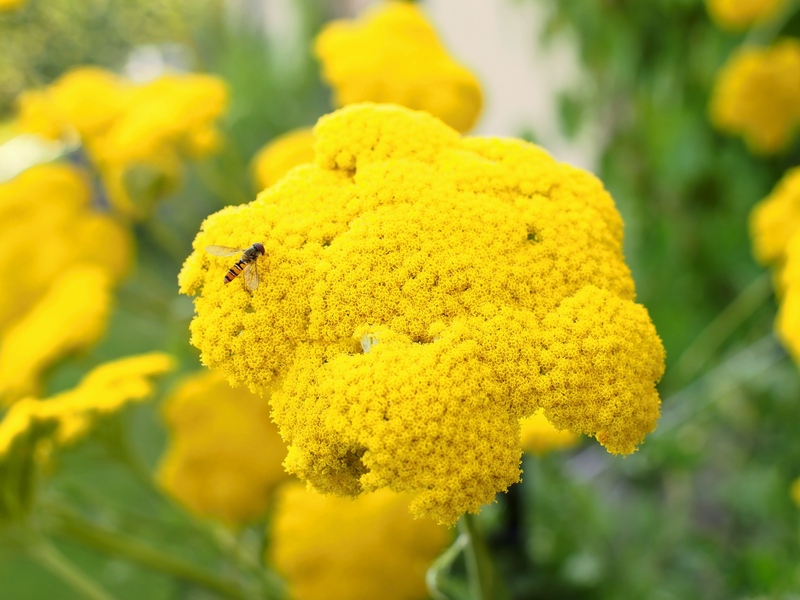Earth-Friendly Gardening: A Leafy Climate Solution
Posted on 20/06/2025
Earth-Friendly Gardening: A Leafy Climate Solution
Earth-friendly gardening is much more than a fleeting trend--it's a vital approach to creating lush home landscapes that actively contribute to healthier ecosystems and a stable climate. In this comprehensive guide, we'll explore how eco-conscious gardening practices can become a powerful tool in the fight against climate change while rewarding you with beauty, biodiversity, and bountiful harvests.
Understanding Earth-Friendly Gardening and Its Climate Impact
Earth-centered gardening, sometimes called climate-friendly gardening, encompasses a set of principles and practices focused on minimizing environmental harm while maximizing ecological benefits. By supporting soil fertility, enhancing biodiversity, and reducing resource consumption, homeowners and communities can transform their outdoor spaces into thriving, carbon-absorbing sanctuaries.
How Gardening Affects the Climate
- Capturing Carbon: Plants absorb carbon dioxide (CO2) from the atmosphere, storing it in their tissues and the soil, thereby slowing climate warming.
- Biodiversity Support: Eco-friendly gardens provide habitats for pollinators, birds, and beneficial insects, supporting healthy ecosystems.
- Resource Conservation: Sustainable practices reduce the need for water, fertilizers, and pesticides, preventing environmental degradation and pollution.
- Reduced Urban Heat: Dense plantings create shade and help cool microclimates, mitigating the "urban heat island" effect.
Adopting a sustainable gardening plan means every flower, tree, or vegetable you add can contribute directly to planetary well-being--one leafy solution at a time.

Principles of Sustainable and Climate-Smart Gardening
Embracing earth-conscious gardening starts with understanding the essential principles that guide climate-smart choices:
- Soil Health is Wealth: Rich, living soil acts as a carbon bank, a water reservoir, and a foundation for thriving plants.
- Native and Climate-Appropriate Plants: Choosing species adapted to your region ensures resilience and reduces inputs.
- Water Stewardship: Designing gardens that use water wisely, capture rain, and minimize waste.
- Diversity and Habitat Creation: Encouraging plant, insect, and animal diversity for stable, functional ecosystems.
- Reducing Chemicals and Waste: Eliminating toxic inputs and reusing garden waste to close the nutrient loop.
Mimicking Nature: The Permaculture Connection
Permaculture gardening is a holistic approach to earth-friendly gardening that mimics natural ecosystems. By working with nature's patterns--mulching, companion planting, building healthy soils, and collecting rainwater--you create a self-sustaining landscape that requires less work and outputs more ecological benefits.
Key Earth-Friendly Gardening Techniques
Let's dive into the practical steps to turn your home garden into an effective climate solution:
1. Boost Soil Health with Organic Matter
- Compost: Recycle kitchen scraps and yard waste into black gold to enrich the soil naturally and lock away atmospheric carbon.
- Mulch: Covering the ground with leaves, straw, or wood chips keeps roots cool, suppresses weeds, and feeds soil microbes.
- No-Dig/Low-Till Methods: Disturbing soil as little as possible preserves soil structure, fosters beneficial organisms, and enhances carbon sequestration.
2. Plant Trees and Perennials for Carbon Capture
Trees are nature's climate champions. Deep-rooted perennials and woody plants lock up carbon for decades while shading the earth and providing homes for wildlife.
- Shade Trees: Lower household energy use by cooling your home in summer.
- Fruit and Nut Trees: Offer food along with ecosystem services--like pollinator support and habitat.
- Native Shrubs and Groundcovers: Reduce erosion, increase water infiltration, and require less maintenance than lawn grasses.
3. Use Native and Drought-Tolerant Species
Native plants are well suited to your local climate and soils, reducing the need for extra water, fertilizer, or pesticides. They're also key to supporting local birds, bees, and butterflies, making your earth-wise garden a haven for wildlife.
- Research Regional Plant Lists: Many extension agencies and conservation groups offer lists of native and adapted plants.
- Group by Water Needs: Place thirsty plants together and keep drought-hardy specimens separate to use water efficiently.
4. Save Water and Harvest Rain
- Drip Irrigation: Delivering water to roots, not leaves, reduces waste and disease.
- Rain Barrels: Capture and store rainfall for use during dry spells, reducing reliance on municipal supplies.
- Rain Gardens and Swales: Direct stormwater into planted depressions to soak in and filter pollutants naturally.
5. Switch to Earth-Friendly Lawns
The traditional American lawn is maintenance-intensive and often a source of pollution. Eco-minded gardening offers alternatives:
- No-Mow Meadows: Replace turfgrass with native grasses and wildflowers, support pollinators, and sequester more carbon.
- Clover Lawns: Low-growing, soft, drought-tolerant, and naturally fertilizes itself.
- Reduced Mowing and Composting Clippings: If you keep some lawn, mow less often and let clippings return nutrients to the soil.
Creating Wildlife Habitat and Maximizing Biodiversity
Every eco-friendly garden can become a pocket sanctuary for wildlife. Biodiverse landscapes are more resilient and play an essential role in climate adaptation.
Elements of a Pollinator-Friendly Garden
- Flowering Plants: Grow a mix of shapes, sizes, and bloom times to feed bees, butterflies, and birds throughout the seasons.
- Shelter: Leave some brush piles, deadwood, or stone walls for nesting and protection.
- Water Sources: Add shallow dishes, birdbaths, or small ponds for drinking and bathing.
- Pesticide-Free Management: Avoid chemical sprays that harm beneficial insects, opting instead for natural pest controls.
Reducing Waste: Composting and Closing the Loop
A major tenet of green gardening is keeping nutrients on-site:
- Composting: Turn leaves, grass, and food scraps into rich fertilizer while diverting waste from landfills--a significant source of methane emissions.
- Leaf Mulch: Shred autumn leaves and reuse as mulch to feed your soil or protect tender plants in winter.
- DIY Natural Fertilizers: Make compost teas and plant-based amendments to keep your garden thriving organically.
Smart Choices in Garden Tools and Materials
Even your tools and hardscaping can support your earth-friendly garden:
- Use Hand Tools When Possible: Shovels, pruners, and hoes have zero emissions compared to gas-powered alternatives.
- Choose Recycled or Local Materials: Salvaged stone, repurposed bricks, and rot-resistant certified woods make paths and raised beds more sustainable.
- Avoid Plastics Where Practical: Opt for biodegradable pots, natural mulches, and long-lasting materials.
Tips for Year-Round Climate-Conscious Gardening
- Rotate Plantings: Prevent pest buildup and enrich soils by rotating crops and using cover crops to add nutrients and organic matter.
- Overseed and Mulch in Fall: Protect bare soil from erosion and runoff with fall cover crops and a generous layer of mulch.
- Plant Evergreens for Winter Interest: Conifers and broadleaf evergreens continue capturing carbon and offering wildlife cover year-round.
- Closely Observe and Adapt: Monitor for signs of climate stress in your garden and adjust your plant selection and practices as needed.

The Social and Community Value of Climate-Friendly Gardening
Earth-smart gardens don't just help the environment--they build stronger neighborhoods and healthier families.
- Sharing Surplus: Donate excess veggies to food banks or start a community garden to feed your neighbors.
- Gardening Education: Teaching children and adults sustainable gardening skills equips future generations for climate resilience.
- Neighborhood Green Corridors: Collaborate with others to link yards and parks, creating migration routes for pollinators and wildlife.
Earth-Friendly Gardening: A Powerful Leafy Solution for Our Climate
With global temperatures rising and biodiversity in decline, every climate-friendly gardening effort matters. By nurturing soil, conserving water, choosing the right plants, and supporting local wildlife, your home garden can be a part of the climate solution--a green, leafy partnership with the earth.
Begin Your Sustainable Gardening Journey Today
Getting started is easier than you might think:
- Start small--replace a patch of lawn with native wildflowers, or add a single compost bin.
- Observe--pay attention to sun, shade, soil, and what wildlife visits your space.
- Keep learning--connect with local botanical gardens, native plant societies, or extension offices for advice.
- Share your success--invite neighbors to see your climate-wise garden and help grow the movement.
Earth-friendly gardening is more than a hobby--it's a way to cultivate hope, beauty, and climate solutions right at home. Every seed you plant and every pollinator you nurture brings us one step closer to a greener, healthier planet.



